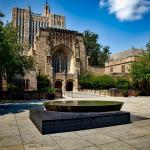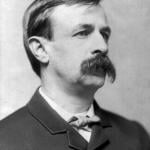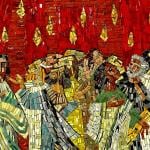 I’ve written a lot about integralism on this site over the last few years (and elsewhere), primarily because I think the questions integralists ask are compelling ones for any Christians engaged in public life. The central topic that today’s integralists write about—how should the state relate to the church?—is a matter of persistent importance, especially at a time of widespread social fragmentation and increasing tension between secular progressive views and the claims of traditional faiths. And there’s a real temptation for American Protestants to take the liberal-democratic norms of the “American model” for granted, without seriously considering the historical contingency of this approach or its own internal pathologies.
I’ve written a lot about integralism on this site over the last few years (and elsewhere), primarily because I think the questions integralists ask are compelling ones for any Christians engaged in public life. The central topic that today’s integralists write about—how should the state relate to the church?—is a matter of persistent importance, especially at a time of widespread social fragmentation and increasing tension between secular progressive views and the claims of traditional faiths. And there’s a real temptation for American Protestants to take the liberal-democratic norms of the “American model” for granted, without seriously considering the historical contingency of this approach or its own internal pathologies.
To be sure, as a Lutheran I have plenty of disagreements with “integralism” in the broad sense. For one thing, I am increasingly convinced that the movement tends toward an excessive reification of “liberalism”—or, put differently, it suffers from a tendency to treat the modern condition as the logically obvious culmination of a deterministic historical process that began with the Reformation (or with Duns Scotus, or William of Ockham, or whomever else). But it’s easy enough to tell just-so stories about history. To my mind, the really difficult question of liberalism is a question about permissible levels of dissent within a regime committed to certain underlying axioms. (The Reformation itself was born in a Catholic milieu—and does anyone looking at the chaotic landscape of Catholic social media these days really think that the Roman Church is an ideologically unified bloc?)
And this, of course, is saying nothing of other critical questions. Is the pursuit of a unified “Christendom” really a first-order theological or political concern? Is it a genuinely “Christian” approach to jettison the possibility of conversion through preaching in favor of conversion through Constantinianism? Is, well, the Roman pontiff actually the Vicar of Christ? (I would answer no to all three.)
But with all of that in view, I’d like to walk back one thing from my prior writings. In the past, I’ve written about “integralism” as if it’s a single monolithic thing, but a survey of the present field (as of December 2020) reveals that this is increasingly untenable. One can now clearly discern two tendencies among those whose foundational commitments are consistent with basic integralist ideas, which one might call postliberalism and integralism. (Left-integralism and right-integralism would certainly be more accurate, but few individuals in these conversations would likely accept those labels.) And so I’m writing this in the hope that others who are interested in this subject will come across these observations and frame their analyses accordingly, because it no longer makes sense to paint all integralists with the same brush.
(A brief note. Some of the participants in these ongoing discussions—many of which play out on Twitter and on the pages of obscure online publications—may disagree with where I’ve classified them. Given that these internal movement cleavages are all developing in real time, the breakdown here should be taken as somewhat provisional.)
In working toward a concept of postliberalism, perhaps the best place to begin is the work of Franciscan University of Steubenville historian Andrew Willard Jones, whose Before Church and State: A Study of Social Order in the Sacramental Kingdom of St. Louis IX was something of a foundational text for the modern-day integralist movement. Notably, Jones does not frame his book as a present-day political manifesto, but rather as an invitation to think beyond the contemporary distinction between “sacred” and “secular,” a posing of the possibility of seeing the world as a comprehensive sacramental unity. One can raise questions about the book as a work of history or political theory (I certainly have) while still seeing the volume’s themes as richly suggestive of further explorations.
Theologically speaking, much of Willard’s book is an expression of the same intellectual impulses underpinning the Radical Orthodoxy movement in British theology, most notably associated with the work of John Milbank. Across his numerous writings, Milbank is ever keen to find the tools to destabilize the modern rift between sacred and secular domains—and he chiefly locates them in a return to both the work of Thomas Aquinas and his metaphysical forebears in the patristic and early medieval Christian tradition.
Over against the critical/postmodern claim that absolutizing metaphysical thought inevitably leads to violence—why won’t you conform to your proper order?—theologians in the orbit of Radical Orthodoxy draw on the Neoplatonic vision of God as the absolute metaphysical unity in whom all differences are ultimately reconciled. Rather than serving as a warrant for violence, on this view theology is an invitation to exult in the creativity and uniqueness that all flows out of God’s undifferentiated light. (David Bentley Hart’s breakthrough book The Beauty of the Infinite is an extended exploration of this theme.)
Building on this idea, a central theme of Jones’s book—and of postliberalism more generally—is the concept of ontological peace. Against the presumption of some post-Enlightenment political thought that, absent strong government, human life would devolve into a Hobbesian war of all against all, the postliberal responds with St. Augustine’s adage that all things are restless until they rest in God. Ontological peace is thus the possibility that within God’s light, all wounds and sins that divide human beings are ultimately capable of reconciliation.
A distinctively postliberal emphasis on political economy follows from this general eschatological picture. The overwhelming majority of postliberals are sharply critical of modern capitalism, which begins with the assumption of resource scarcity rather than the assumption of God’s absolute ontological benevolence—that is, His perpetual sustaining donation of the entire created order to His creatures. A truly just political economy, on this view, must stress the need to bring excessive levels of consumption into alignment with the created-ness of finite, limited creatures. God, in short, always gives human beings enough; problems arise when humans demand more than is proper to them.
Some prominent individuals whom I’d call postliberals are frequent Jones collaborators Marc Barnes and Jacob Fareed Imam, who regularly write at the New Polity publication. I would also include in this category philosophy professor D.C. Schindler, emerging intellectual Kevin Gallagher, theologian Michael Hanby, Notre Dame academic Timothy Troutner, and perhaps even Milbank himself.
Postliberals, as a group, tend to be rather vague about the structure of the political institutions required to advance their comprehensive vision of the good society. In part, this is perhaps attributable to their emphasis on the eventual withering-away of the Westphalian nation-state: Jones and other New Polity writers are openly anti-nationalist, and Milbank and coauthor Adrian Pabst’s The Politics of Virtue: Post-Liberalism and the Human Future repeatedly stresses the importance of transnational forms of governance.
In terms of party politics, many postliberals favor working within left-of-center political parties (hence the moniker). Milbank, for instance, is a major proponent of the “Blue Labour” movement in the United Kingdom. Consistent with that approach, postliberals—despite the vehemence of their critiques of contemporary liberalism—generally do not seem to share an overt desire to return to a (politically) premodern past. I would guess that, if pressed, most postliberals would openly reject certain excesses of the medieval papacy—such as the Inquisition or the kidnapping of Edgardo Mortara.
But what if the hour is too late for such abstractions? What if stronger medicine is required?
By all lights, the godfather of contemporary integralism proper is Pater Edmund Waldstein, a Cistercian monk and proprietor of the most prominent integralist website on the internet, The Josias. And Waldstein does not mince words: in a move that virtually no postliberals would condone, Waldstein openly defends the burning of heretics as a sometimes-necessary feature of Christian society. This much starker approach to integralism has been taken up and adapted by Adrian Vermeule—Ralph Tyler Professor of Constitutional Law at Harvard Law School and Twitter provocateur par excellence—who has openly called for the slaughter of originalism, the sacred cow of constitutional conservatism, and its replacement with a jurisprudence intended “to ensure that the ruler has the power needed to rule well.” Such rule, per Vermeule, would involve the destruction of free speech principles, “[l]ibertarian conceptions of property rights and economic rights,” “a powerful presidency ruling over a powerful bureaucracy,” and the “curb[ing] of the social and economic pretensions of the urban-gentry liberals.”
“Integralism proper” draws less on Radical Orthodoxy and patristic sources than on medieval papal encyclicals and the work of controversial twentieth-century political theorist Carl Schmitt, who argued—through seminal works such as The Concept of the Political and Political Theology: Four Chapters on the Concept of Sovereignty—that the “friend-enemy distinction” is the absolute, irreducible feature of politics. Is there any meaningfully “political” existence, Schmitt wonders, without one side or faction struggling to triumph, fatally and finally, over another?
But “enemy,” crucially, is not a univocal concept. For Schmitt, there is an essential difference between the inimicus, the neighbor-enemy with whom one may disagree, but who nonetheless remains a member of one’s common community, and the hostes—the outsider, the barbarian, the antagonistic outsider who must be crushed. Accordingly, those integralists who follow Schmitt tend to focus on the need to suppress the world’s hostes in the name of a new Christendom. And in service of that end, these integralists tend to gravitate towards populist strongman figures such as Hungary’s Viktor Orbán or Brazil’s Jair Bolsonaro, who seem far less inhibited about confronting their opponents than the “liberals” of decades past. (Some additional prominent figures I would associate with this “right-wing” form of integralism include American Affairs editor Gladden Pappin, and Catholic University of America professor C.C. Pecknold.) Overt support for the institution and interests of the nation-state, on this view, figures far more prominently than on the postliberal account.
Like their postliberal counterparts, many integralists are similarly willing to critique the effects of contemporary capitalism—though this critique tends to be couched in terms of perceived moral decline rather than material hardship. This isn’t a requirement, though. Authors Thomas Crean and Alan Fimister—whose book Integralism: A Manual of Political Philosophy constitutes perhaps the first recent monograph-length treatment of the subject as such—sound positively Reaganite in their treatment of economics. For the integralists proper, the transformation of political economy generally takes a backseat to the promotion of public virtue.
None of this is to suggest that “postliberalism” and “integralism” don’t share key commonalities. Most importantly, both types of “integralism” reject the key premise of modern liberalism that political and social life can be unmoored from any full-bore conception of the common good. Instead, the salient left/right distinction within the contemporary integralist tradition can be reduced down to a single question: does the Schmittian friend/enemy distinction have any place in Christian thought? For the postliberal, there are no hostes, simply inimici—neighbors with whom the Christian is not yet in full communion. But for the integralist, there are indeed hostes—those outside the Church and unwilling to “repent and submit”—and their suppression is a necessary prerequisite for the achievement of the common good.
This divergence has significant metaphysical implications. On the postliberal view, the ultimate ontological peace of all things is in some sense already realized; politically speaking, a degree of tolerance of difference is permitted because all things are contained within God’s transcendent unity, in which they will ultimately be brought to their proper perfection. By contrast, on the integralist view, any “ontological peace” must ultimately be imposed by the strong hand of the sovereign, who must orient a fundamentally recalcitrant populace toward virtue. (It must be noted that, in its emphasis on the incorrigibility of man, this strain of integralism does strike a rather Protestant note.)
What to make of this cleavage? If it isn’t already clear, I’m substantially sympathetic to the postliberals’ project (albeit not that of the integralists proper—I do enjoy not being burned at the stake). While I wouldn’t carry the postliberals’ indictment of capitalism quite as far as Milbank (or, say, William Cavanaugh or Eugene McCarraher, who work with the same conceptual apparatus), I do agree that the dominant Western approach to political economy is not conducive to the flourishing of all people. And I likewise agree with the postliberals that the sacred/secular distinction is remarkably unstable upon examination.
Nevertheless, I frequently find myself thinking that both variants of integralism tend to understate the radical surprise of the Gospel, the utter non-necessity of the Son of God’s entrance into human time and the gratuity of the promised resurrection of the dead and life of the world to come.
It would take reams of paper to fully develop the point, but in terms of their inner structures, both types of “integralism” seem to me to be—at bottom—non-Christian political philosophies to which a Catholic coat of paint has been applied. The theological vision of the postliberals affirms the realities of grace and transcendent unity, but so too might a political philosophy built on unreconstructed Neoplatonism. And the political project of the integralists proper seems to reduce down to “totalitarianism, but the right one.”
Surely the Incarnation of Jesus Christ must mean something transformative for human civilizational life, as opposed to being uneasily shoehorned into political systems that are not in any substantive sense Christocentric. For one thing, if love your enemies and pray for those who persecute you means anything at all, it ought to mean that for the Christian, there are properly speaking no true hostes this side of the eschaton. Rather, there are only inimici, not-yet-neighbors whom God wants to be saved and to come to a knowledge of the truth. But furthermore, the Incarnation—particularly given its finale, the Ascension—discloses the fundamental provisionality of any this-worldly ontological peace. No form of political economy, however well ordered, can fully undercut the sobering promise of Christ to his followers that in this world you will have tribulation. As history advances, social orders will come and go. There is no “set-it-and-forget-it” polity.
My own misgivings about this whole endeavor aside, I do look forward to seeing how these debates continue to develop—though I certainly think that the Christian intellectual world will be better off if the postliberals carry the day. There is a fundamental optimism to the postliberal vision that, to my mind, seems far more consistent with Christian hope than the bleakness of the integralist ideal. And the postliberals, unlike their rivals on the “right,” do not seem to believe that one might replay history and erase modernity, if only enough power could be brought to bear.
Time alone will tell which branch of this movement ultimately comes to the fore.












